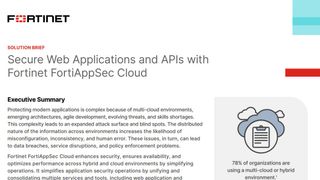What is enterprise mobility?
There’s more to mobility than making sure employees have a smartphone and a laptop

Enterprise mobility is the umbrella term for a number of interlocking strategies that ensure companies can operate in a flexible, modern way.
At the heart of enterprise mobility is the ethos that employees should have the tools available to allow them to work from anywhere, across a variety of devices. This isn't just about hardware, though software also plays a vital role.
Here we look at the key aspects of enterprise mobility to help you understand what's involved and plan your own strategy.
The evolution of enterprise mobility
While it may be a hot topic right now, enterprise mobility is in some ways nothing new. The earliest examples of this trend can be seen in the adoption of business-focused mobile devices, like BlackBerry smartphones and PDAs such as PalmPilot, by the top tiers of business management during the late 90s and early 2000s.
Typically, these were business owned and managed devices intended to help these senior members of staff stay connected while out and about at client meetings and other events.
Come the mid-2000s, though, the landscape was starting to shift, thanks in large part to the launch of the iPhone. This brought internet connectivity and apps, which had previously been the reserve of these executive devices, to the mass market and thus all layers of the business.
The mass availability and adoption of consumer smartphones led to the phenomena known as "bring-your-own-device" (BYOD) and the consumerisation of IT, which broadly refer to users accessing the corporate network or corporate data through their own smartphone or, latterly, home computers.
Get the ITPro. daily newsletter
Receive our latest news, industry updates, featured resources and more. Sign up today to receive our FREE report on AI cyber crime & security - newly updated for 2024.
To BYOD or not to BYOD?
This is a crucial question when it comes to an enterprise mobility strategy and one that's far from settled.
While BYOD is widely used and accepted in some businesses, others still prefer to provide their staff with corporate owned devices.
There are arguments for both sides: on the one hand, BYOD is very cost effective and the staff member is clearly happy using the device in question, as it is their own. This means they're less likely to try and circumvent rules or revert back to their own device anyway.
On the other hand, businesses that issue devices to users maintain greater control not only over the hardware, but also the corporate data held on them. After all, you can't demand a user hand over their personal device when they leave the company.
There's no hard and fast rule as to which approach is best for any given business, so it's important to analyse the benefits and drawbacks for your business closely before making any decisions.
Mobility management software
As with any business project or large initiative, you can't just roll out the hardware and forget about it. Continuous management is a key part of enterprise management, but fortunately there's plenty of specialist software out there to help.
This includes apps that allow users to access corporate data and documents through their smartphone or tablet without it ever actually being transferred to the device itself. This is particularly useful in a BYOD scenario, where access can be revoked as soon as a staff member leaves the business, for example. Additionally, there are products that isolate corporate apps from the rest of the software on a user's phone, meaning there's less likelihood a malicious app could gather sensitive data. Once again, this is ideal for a BYOD scenario.
There's also other software that can restrict what users can access through devices that are connecting from outside the corporate network. This is particularly important for security, as the person trying to access the data, while a legitimate user, may be connected to an unsecured network that's vulnerable to data interception.
Overall, while enterprise mobility is a single concept, the implementation will be different for each business. Carrying out a full assessment of what you want to achieve, the risks associated with it, and how much you are willing to spend are vital first steps to ensuring a successful enterprise mobility strategy.
Main image credit: Bigstock

Jane McCallion is ITPro's Managing Editor, specializing in data centers and enterprise IT infrastructure. Before becoming Managing Editor, she held the role of Deputy Editor and, prior to that, Features Editor, managing a pool of freelance and internal writers, while continuing to specialize in enterprise IT infrastructure, and business strategy.
Prior to joining ITPro, Jane was a freelance business journalist writing as both Jane McCallion and Jane Bordenave for titles such as European CEO, World Finance, and Business Excellence Magazine.






